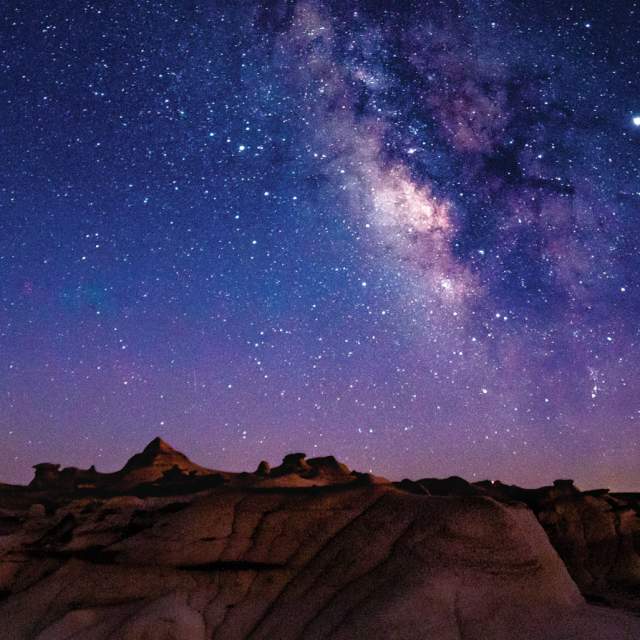From rugged mountaintops to grassy plains to the high desert, New Mexico’s hiking and camping spots exude diversity.
Encompassing six of the world’s seven life zones, the state’s landscapes offer a taste of nearly all climes. Open space, along with diverse wildlife and plant species are plentiful in this vast and sparsely populated state. Every year the Land of Enchantment attracts millions of visitors who seek out its scenic beauty and infinite varieties of outdoor recreation.
Federal and state lands offer an abundance of public hiking trails and campgrounds, and several Native communities permit camping, hiking, hunting, and fishing.
Camping & Hiking by Region, Additional Information & Outfitters
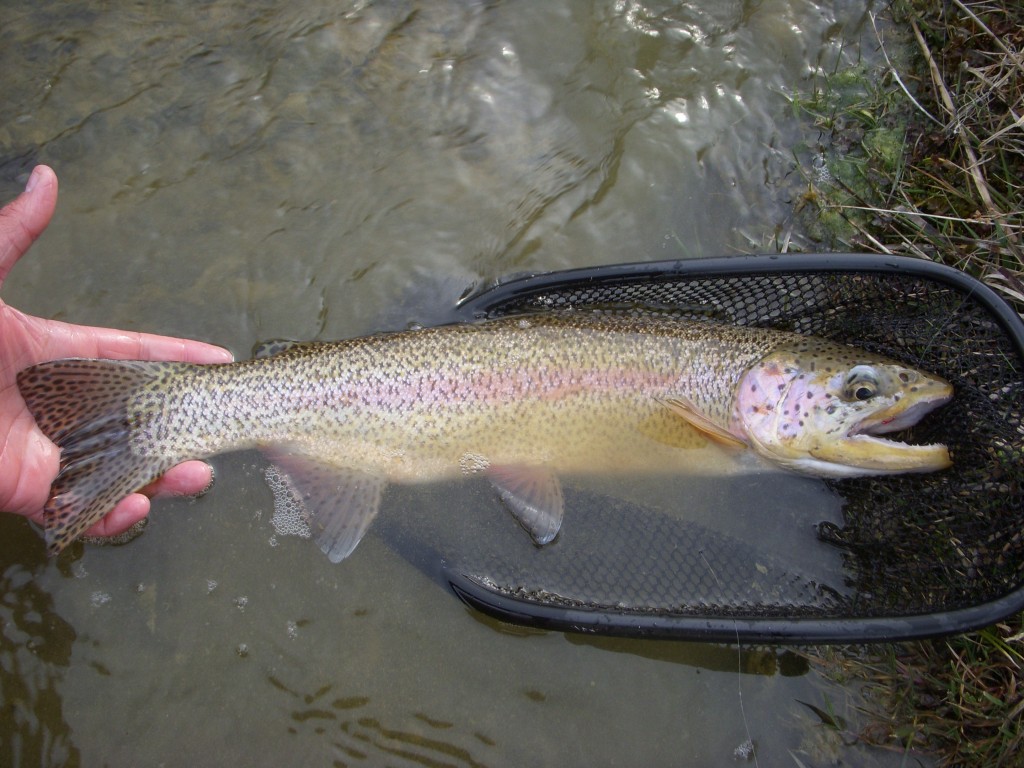
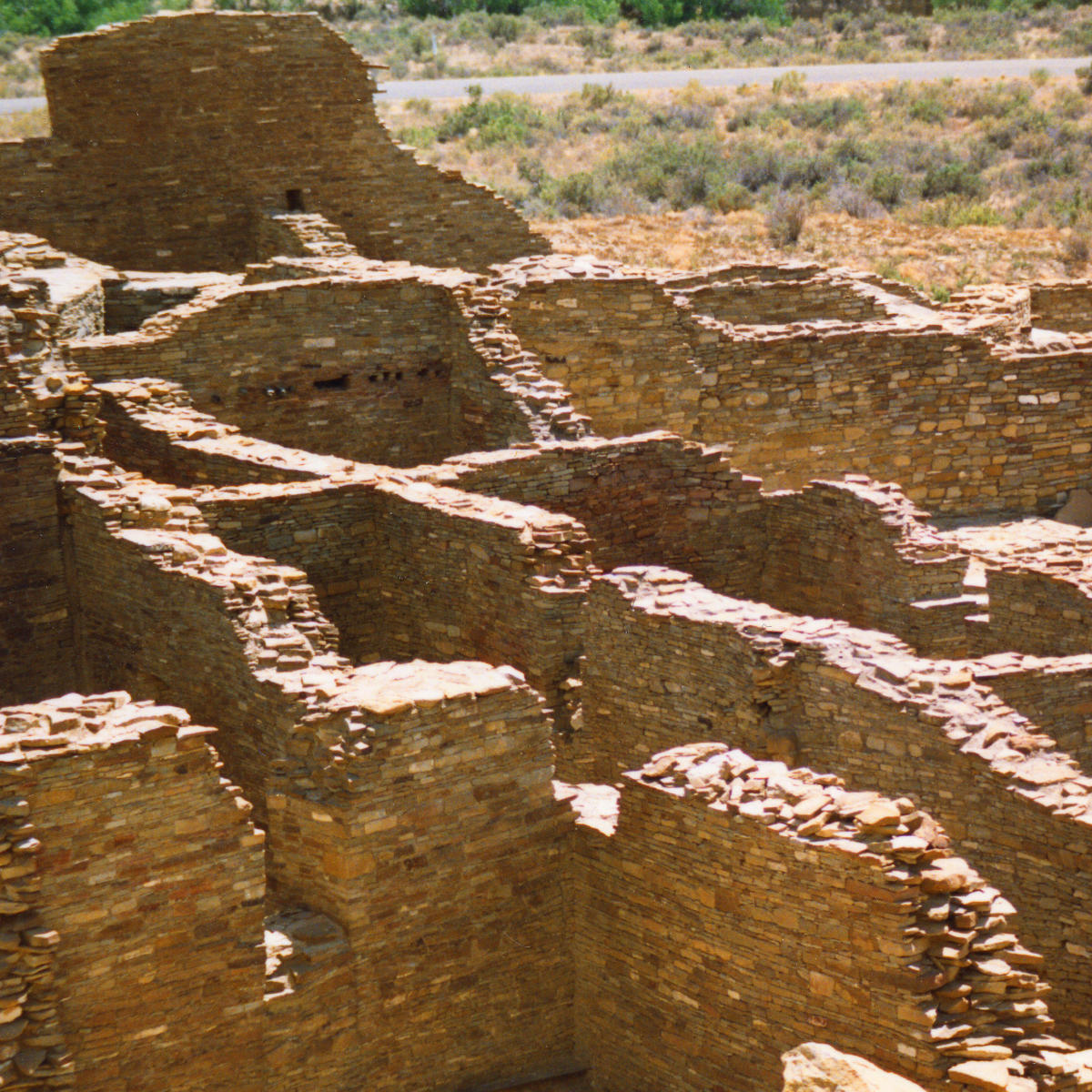

NORTHWEST
Situated atop the Colorado Plateau, the Four Corners region features the only point in the United States where four state boundaries touch. The Navajo Nation encompasses much of the region’s mesas and buttes, while the San Juan River meanders through. For more information about hiking or camping on the Navajo Nation, click here.
Chaco Culture National Historical Park is a main attraction in the region. The site contains more than 4,000 prehistoric ruins of structures built by the Chacoan people, a people who created a thriving civilization a thousand years ago before migrating to new areas in the 13th century. The park’s campgrounds fill up quickly during the summer, so plan to arrive early. Extensive trails wind through excavated structures, and there are four backcountry trails for day use. Camping is only allowed in Gallo Campground, located just one mile east of the Visitor Center. For more information about camping at Chaco Culture National Historical park, click here.
Northwest of Chaco lies Angel Peak Scenic Area, a distinct landmark that rises from an ancient seabed to form contemporary “badlands.” The area’s 10,000 acres of rugged terrain is renowned for its scenic and scientific wonders. Camping, hiking, and picnicking are permitted. For more information about Angel Peak Scenic Area, click here.
Farther north you’ll find Navajo Lake State Park, the second-largest park in the state and world renowned as an angler’s paradise for its excellent trout fishing. For more information about the park’s wide variety of camping and hiking sites, click here.
To the south, don’t miss El Malpais National Conservation Area and El Malpais National Monument, managed by the National Park Service. The black, rugged remnants of 3 million years of volcanic eruptions carpet a widespread area. Trails and primitive campsites are available at both locations.
Wild Spirit Wolf Sanctuary open to the public Thursday - Sunday from 11am to 4pm with guided tours at noon and 3pm. During the summer season the sanctuary has a campground where volunteers and guests are permitted to stay to hear the wolves sing them to sleep.

NORTH CENTRAL
At 13,161 feet, Wheeler Peak — New Mexico’s highest — highlights this region in which the hiking and camping opportunities are almost innumerable. The Carson and Santa Fe National Forests are located in this region along with the Pecos Wilderness. Together they cover 3.1 million acres and offer more than 1,300 miles of trails and 63 campgrounds.
Within the Santa Fe National Forest are the Sangre de Cristo Mountains and the volcanic Jemez Mountains, which both provide the largest number of hiking trails and campgrounds in the state. Hyde Memorial State Park, just outside of Santa Fe, and the surrounding National Forest provide the perfect hiking/camping combination, offering miles of trails and primitive and developed campsites just minutes from the capital city.
For a unique hiking and camping experience in the Sangre de Cristo Mountains, visit Wild Earth Llama Adventures and enjoy the company of wooly llamas that carry your gear and camp with you in the rugged terrain. With your guide and wooly companion, learn more about the hidden gems of the Southern Rockies!
Bandelier National Monument, near Los Alamos, is an educational day trip into the Jemez Mountains. On paved hiking trails, you can explore ancient cliff dwellings and kivas, or hike into the rugged backcountry and wilderness. There is also a campground located within the monument. For more information, click here.
To the north, in the Chama Valley, El Vado Lake and Heron Lake State Parks are connected by a 5.5-mile trail along the Rio Chama. Scenic cliffs rise on either side of the spectacular canyon. Both parks offer campgrounds.
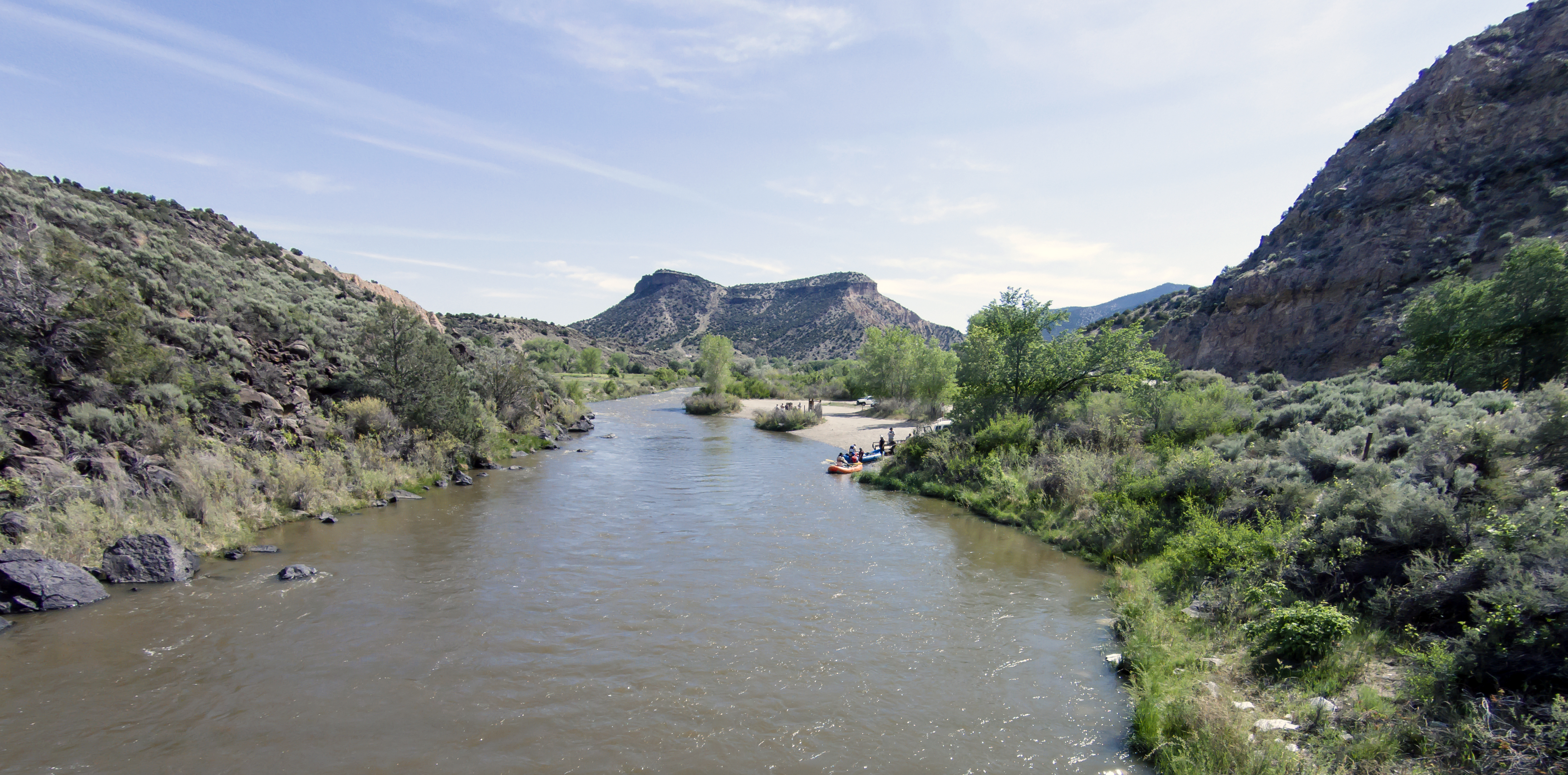

NORTHEAST
Within the eastern flanks of the Sangre de Cristo Mountains, hiking trails and camping opportunities abound in both the Carson and Santa Fe National Forests, and in Cimarron Canyon State Park, which features stunning palisade cliffs, excellent wildlife viewing opportunities, and areas for camping and hiking. The adjacent Colin Neblett Wildlife Area provides additional wildlife viewing, as does the Las Vegas National Wildlife Refuge and Sierra Grande Volcano Overlook.
As you journey east, the mountains slope down into wide-open high plains. Most of the eastern corridor of the state comprises the western edge of the nation’s Great Plains. As much of the northeast region is private land, there are few trails, but you’ll find plenty of campgrounds near lakes and rivers. Among them are the Clayton Lake, Conchas Lake, Ute Lake, and Santa Rosa Lake State Parks.

SOUTHEAST
Bordering Texas, this corner of New Mexico contains the most diverse combination of landscapes in the state. From the incredibly beautiful white gypsum sand dunes at White Sands National Park to the towering Sacramento Mountains to the world’s most extensive subterranean cave system at Carlsbad Caverns National Park, southeastern New Mexico’s diversity is awe-inspiring. Bureau of Land Management (BLM) lands cover much of the area, providing many hiking and camping options.
Valley of Fires National Recreation Area is a BLM area with a large part of the Carrizozo Malpais, the youngest lava flow in the continental United States. There is a campsite and hiking trail that winds across the jagged, black landscape.
Both birthplace and final resting place of the famous Smokey Bear, the Lincoln National Forest encompasses 1.1 million acres across the Capitan, Sacramento, and Guadalupe mountains, and includes two wilderness areas. In this same mountainous area lies the Mescalero Apache Reservation, where camping, fishing, and hunting are permitted by fee. You can learn more here.



SOUTHWEST
The mountainous Gila National Forest covers 3.3 million acres in this region, making it the largest National Forest in New Mexico. Within this massive forest resides the Aldo Leopold, Blue Range, and Gila Wilderness Areas. In 1924, the Gila became the world’s first designated wilderness, preserved as a primitive area by prohibiting motorized vehicles and other strict regulations. Far from metropolitan areas, this forest offers hundreds of miles of streams, more than 20 campgrounds, and more than 1,500 miles of trails.
Campgrounds and hiking trails are also available in several mountain areas in the southern part of Cibola National Forest, just north of the Gila. This area is home to the Magdalena, San Mateo, Bear, Gallinas, Datil, Crosby, and Sawtooth mountains.
A must-see area, especially from November to March, is the Bosque del Apache National Wildlife Refuge, just south of Socorro along the Rio Grande. Camping is not permitted, but the refuge’s hiking trails will provide you with remarkable views of waterfowl and other diverse bird species that winter in the wetlands.
If geology is your area of interest, City of Rocks State Park, near Deming, is the place for you. Known to exist in only six other places on Earth, these incredible rock formations these incredible rock formations resemble of city of volcanic rock skyscrapers. These rock formations are the latest result of volcanic ash sculpted by wind and water throughout the last 30 million years. Impressive cactus gardens complement the campground.
Located on the rugged western slopes of the Florida Mountains, Rockhound State Park takes its name from the abundant gems and minerals found there. Visitors are allowed to take up to 15 pounds of rocks home with them. Hiking trails offer scenic views of the area, and there is a spacious campground.
While in the area, drive south to the historical Pancho Villa State Park. An interpretive trail takes you to old buildings and other sites that teach hikers the history of Mexican Gen. Francisco “Pancho” Villa’s 1916 raid on the tiny border town of Columbus, the last armed invasion of the continental United States. There are also extensive exhibits, a desert botanical garden, and campgrounds.
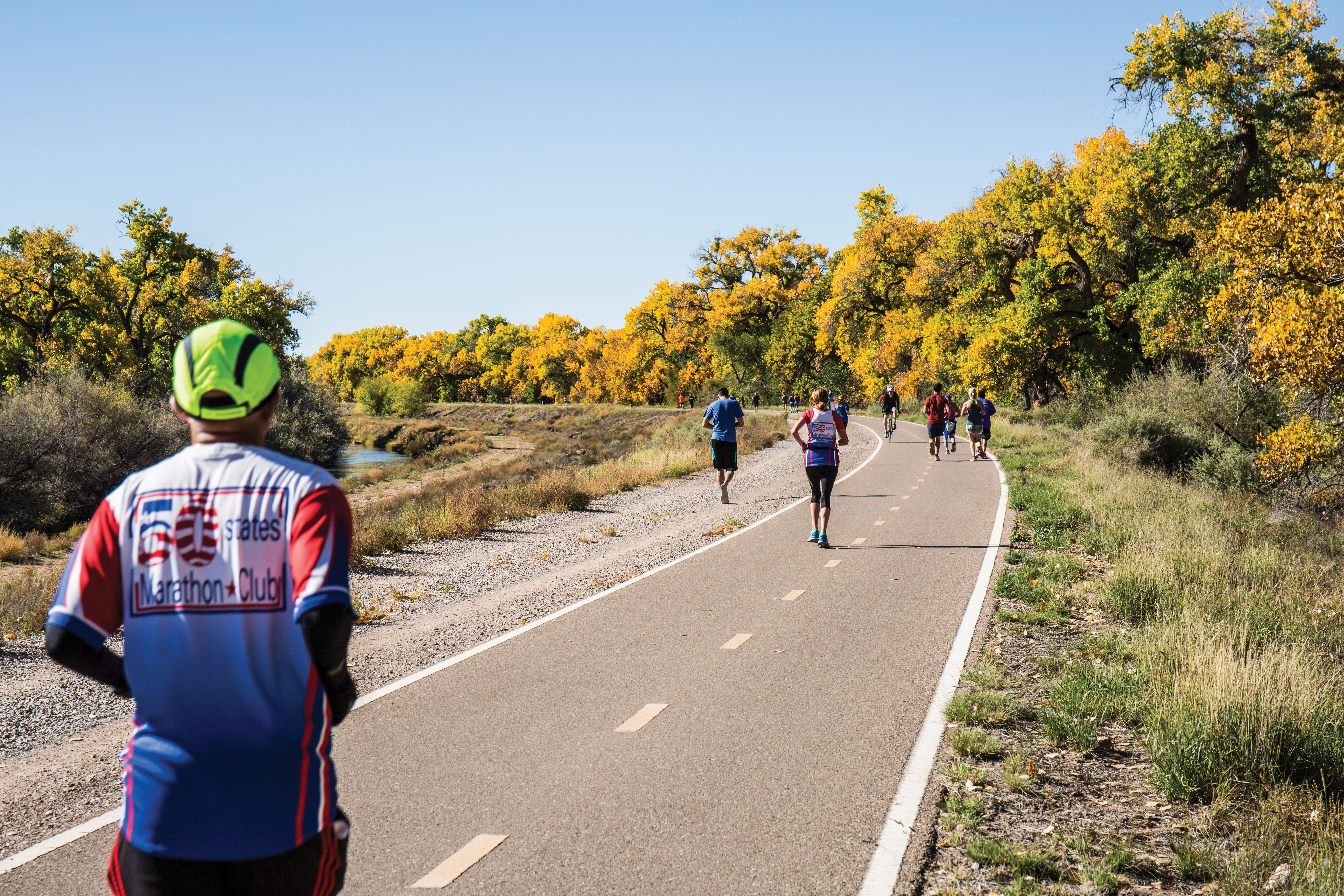

CENTRAL
New Mexico’s largest city, Albuquerque, dominates the central region of the state. Even though it is a metropolitan area, it’s still possible to find peaceful camping and hiking in the nearby Sandia and Manzano mountains. The Cibola National Forest and two of its wilderness areas cover the majority of these majestic mountain ranges. The rocky western face of the Sandia Mountains rises to a peak of 10,678 feet in elevation; the gradual eastern slopes are pine- and fir-covered. Seasoned hikers can make the steep hike up La Luz Trail from the city limits on the western side or approach the crest on one of many tails emerging from the sloped eastern side. A popular stop is the Manzano Mountain Wilderness with many hiking possibilities and several area campgrounds. Also in the area is Manzano Mountains State Park, a small seasonal park (March – November) with beautiful views, hiking, and camping.
One of the more popular state parks in the area is the Rio Grande Nature Center State Park located along the river amongst the Bosque’s plentiful cottonwood trees. Just minutes from downtown Albuquerque, wintering waterfowl stop here, and hikers enjoy the solitude of nature trails that wind beneath the cool canopy of trees along the water’s edge.
There are numerous privately owned campgrounds in New Mexico, and information about these can be obtained from local Chambers of Commerce. RV facilities are limited on federally managed public lands, but nearly all of New Mexico’s state parks can accommodate them. For more information on how to identify where these amenities exist, check out the New Mexico State Parks website.
More Information
Bureau of Land Management,
(505) 438-7542 or www.nm.blm.gov
National Park Service,
(505) 988-6011 or http://www.nps.gov
NM Department of Game and Fish,
(505) 827-7911 or http://www.wildlife.state.nm.us/
NM State Parks Division,
(505) 827-7173, 1-888-NMPARKS (667-2757),
http://www.emnrd.state.nm.us/SPD/
US Fish and Wildife Service,
(505) 248-6911 or www.fws.gov
US Forest Service,
(505) 842-3292 or Home | US Forest Service (usda.gov)




